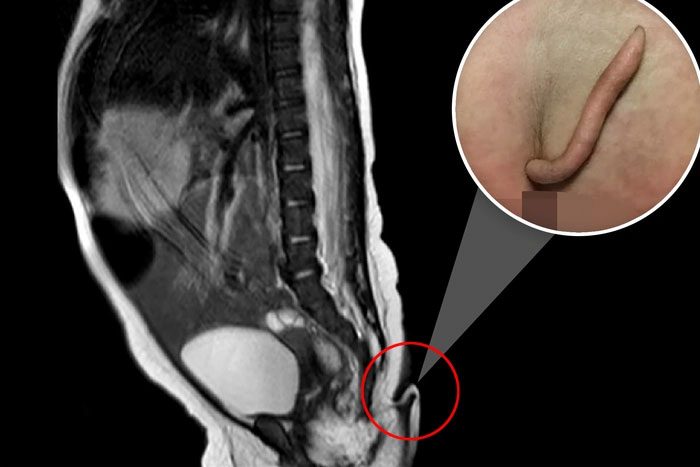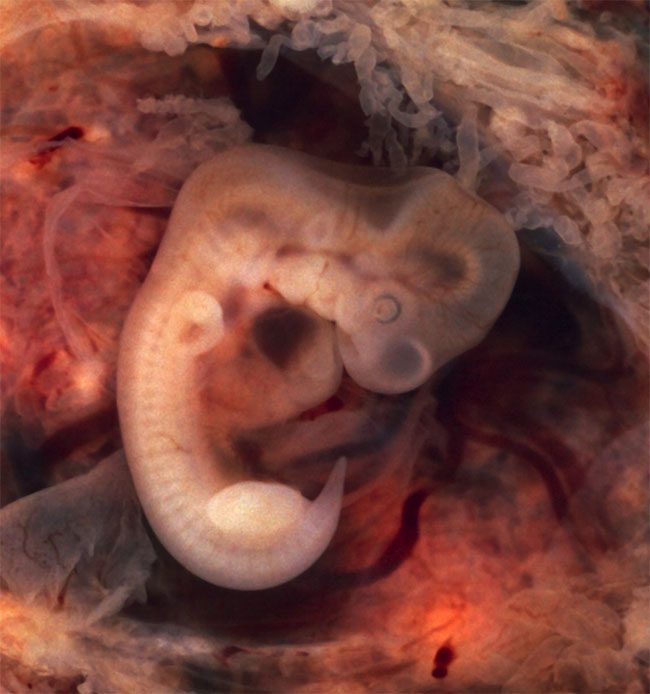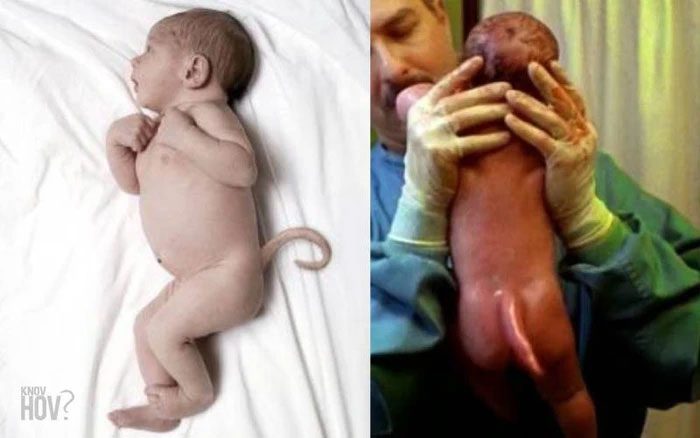The condition of congenital tails in humans is a strange and rare phenomenon.
The human body is a complex biological system that sometimes exhibits fascinating and unexpected changes. One such intriguing occurrence is that some newborns are born with tails, similar to the tails found in various animal species.
While this may seem surprising, it is essential to understand the underlying reasons and biological explanations for this phenomenon.

As scientific knowledge progresses, our understanding of human development and genetics continues to evolve. Research in these fields not only helps us appreciate our origins but also sheds light on the complexity and diversity of life.
The Embryonic Origin of Human Tails
To understand why some individuals are born with tails, it is crucial to look back at the embryonic development process of humans. In the early stages of embryogenesis, all human embryos develop a tail-like structure called the tail bud, which extends from the developing spine. This tail bud is a remnant of our evolutionary history when our distant ancestors possessed tails, similar to many animal species. As the embryo develops, it undergoes a process known as tail regression, in which the tail bud degenerates and ultimately becomes the coccyx in adult humans.

The occurrence of some individuals born with tails, although very rare, can provide valuable insights into our evolutionary past and the wonders of human development.
However, in a few cases, this regression process may not be fully completed, leading to the presence of tail-like structures at birth. These structures are not actual tails, as they lack the necessary muscles and nerves found in animal tails.
Instead, they are classified as “vestigial tails”, representing remnants of our evolutionary past. Although they do not function as actual tails, these structures can vary in size and shape, ranging from a small bump to more prominent structures resembling animal tails.
It is important to emphasize that the presence of vestigial tails in newborns is not a cause for concern in most cases. Although rare, it serves as an interesting reminder of our shared evolutionary ancestry with other animal species.
Genetic Factors and Atavism
While most cases of human vestigial tails may arise from normally developing embryos, there are instances where genetic factors and mutations play a role. Atavism refers to the re-emergence of ancestral traits in a species, sometimes manifesting as the presence of tail-like structures in newborns.
Researchers have identified specific genes associated with tail development in various animal species. In some cases, mutations or variations in these genes may lead to the reappearance of tail-like structures in human embryos.
These genetic factors may explain the rare occurrence of fully functional tails in humans, although such cases are extremely rare and often associated with more severe developmental issues.

In biology, atavism refers to the modification of biological structures, where a genetic trait of an ancestor reappears after being lost due to evolutionary changes in previous generations.
It is essential to distinguish between true atavism and the more common vestigial tail. True atavism would involve a fully developed and functional tail, while vestiges of the coccyx are typically non-functional and benign. This distinction is crucial when examining such cases to understand the underlying developmental and genetic mechanisms at play.
Medical Considerations and Treatment Options
In most cases, the presence of coccygeal remnants is harmless and does not pose any immediate medical concerns. These structures are often benign and may not require any medical intervention. Doctors and parents should avoid attempting to surgically remove tail-like structures, as such procedures can carry unnecessary risks and complications.
However, there are cases where tail-like structures may be associated with developmental abnormalities or other skin conditions, and in such instances, medical evaluation and appropriate management are necessary. A comprehensive examination by a pediatrician or pediatric surgeon is essential to determine the best course of action based on the specific circumstances of each case.

The presence of tails in some individuals serves as an intriguing reminder of our evolutionary history and our shared ancestry with other organisms. Evolution is an ongoing process, and the occasional appearance of such structures highlights the complexity and adaptability of life on Earth.
It is important to provide support and understanding to families with children born with coccygeal remnants. Such incidents can sometimes cause anxiety or emotional distress for parents, and providing information and reassurance can be valuable in alleviating their concerns. Encouraging open dialogue with healthcare professionals and ensuring access to appropriate medical advice can also help mitigate any worries surrounding the presence of vestigial tails.


















































